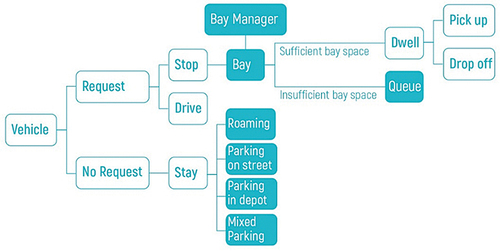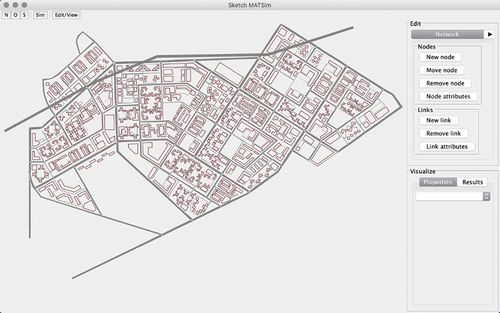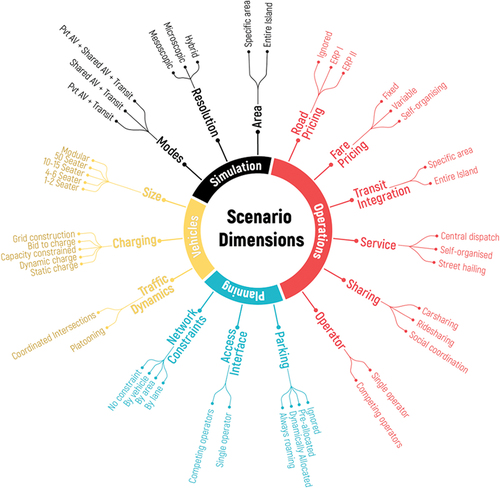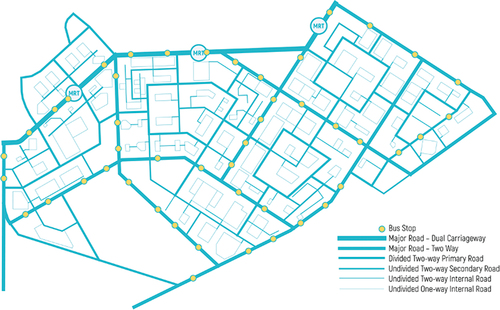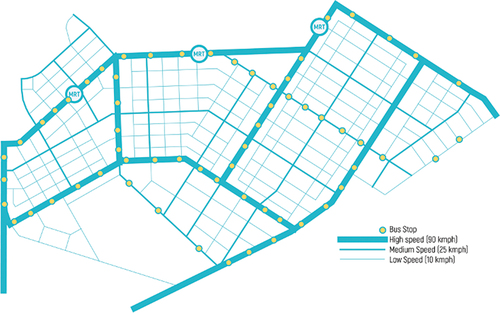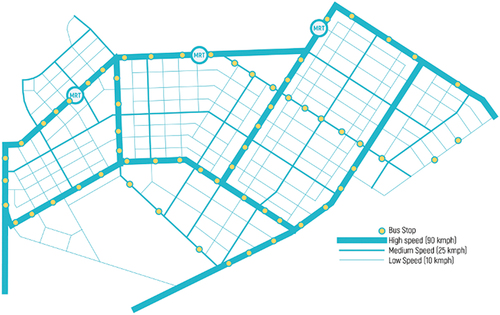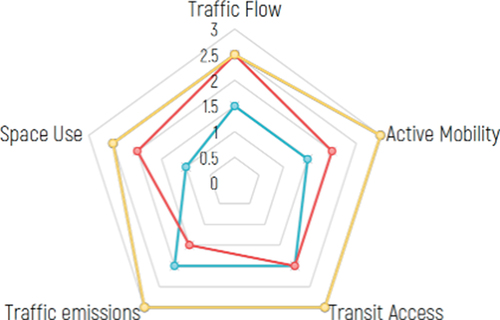Figures & data
Figure 1. Reducing from all plausible models within attribute space to limited number of models with limited values for each variable, to finally develop one design experiment.

Table 1. Conjectures on the performance of the three network types in the experiment.
Figure 11. Comparison of trip legs by mode in all three network types. A trip is the direct travel between two destinations with one or more transport modes. An example for a trip is home to work. A trip leg is a segment of a trip, which is separated by a change of transport mode or an intervening stop with a short dwell time (e.g., stop for a coffee, public transport transfers).
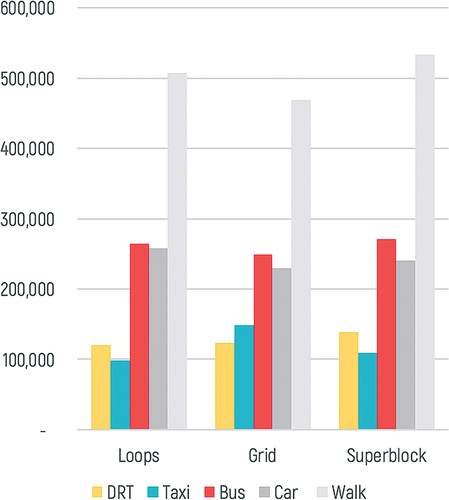
Table 2. Distance-based occupancy of shared vehicles in all three networks.
Table 3. Observed traffic speeds during peak and off-peak hours on the three networks in the simulation compared to the designed network free speed.
Table 4. Summary of results from the network experiment.


